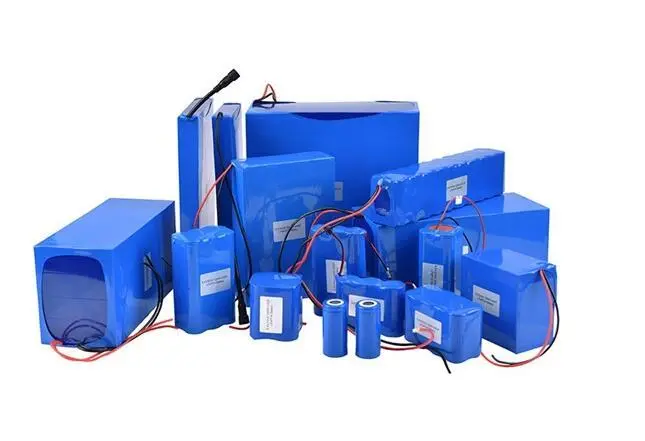Understanding 36V Batteries: Types, Capacities, and Choosing the Right Option

Batteries are essential to our modern lives, powering everything from our smartphones to vehicles. Among the many options, 36V batteries stand out for their robust performance and versatile applications. Whether you’re powering an electric bike, a power tool, or another high-demand device, knowing the essentials of 36V batteries is key. In this guide, we’ll explore different types of 36V batteries, their capacities, sizes, weights, and much more.
Part 1: Types of 36V Batteries
There are a few main types of 36V batteries, each with its unique features, chemistry, pros, and cons:
-
36V Lithium-Ion (Li-ion) Batteries
- Characteristics: Lightweight with high energy density, providing lots of power for their size.
- Chemistry: Use lithium salts in organic solvents, with lithium ions moving between anode and cathode to generate power.
- Pros:
- High energy density
- Lightweight
- Long lifespan with proper care
- Fast charging
- Low maintenance
- Cons:
- Higher cost
- Sensitive to extreme temperatures and overcharging
-
36V Nickel Metal Hydride (NiMH) Batteries
- Characteristics: Moderate energy density and heavier than lithium-ion batteries.
- Chemistry: Uses nickel oxide hydroxide and a hydrogen-absorbing alloy.
- Pros:
- Environmentally friendly
- Cost-effective
- Reliable performance
- Cons:
- Shorter lifespan
- Slower charging
- Potential memory effect if not fully discharged
-
36V Sealed Lead Acid (SLA) Batteries
- Characteristics: Heavy and bulky with lower energy density.
- Chemistry: Contains lead dioxide and sulfuric acid.
- Pros:
- Affordable
- Durable design
- Reliable for stationary uses
- Cons:
- Heavy
- Shorter lifespan
- Requires maintenance
Part 2: Understanding Battery Capacity (mAh)
The mAh rating (milliampere-hour) tells you how much energy the battery can store. A 36V battery with 10,000 mAh (10 Ah) will last twice as long as one with 5,000 mAh (5 Ah) under the same conditions. Higher mAh ratings are better for devices with high power demands, while lower ratings may work for devices with lower needs, saving on cost.
Part 3: Size and Weight
The type and capacity of a 36V battery can significantly affect its size and weight:
- Lithium-Ion: Typically the smallest and lightest, ideal for portable applications.
- Nickel Metal Hydride: Bulkier and heavier but still manageable for portable use.
- Sealed Lead Acid: Heaviest and most cumbersome, better for stationary applications.
Part 4: Why Choose a 36V Lithium Battery?
Lithium-ion 36V batteries have many advantages:
- Lightweight and easy to carry
- Long lifespan (up to 5 years or more with care)
- Fast charging to minimize downtime
- High energy density for compact power
- Low maintenance requirements
- Lower environmental impact and no toxic materials like lead
Part 5: Battery Lifespan
A 36V battery’s lifespan varies by type:
- Lithium-Ion: 2-5 years or 500-1,000 charge cycles; high-quality ones can last 5-7 years.
- Nickel Metal Hydride: Typically lasts 1-3 years with 300-500 cycles.
- Sealed Lead Acid: Shorter lifespan, usually 1-2 years, with 200-300 cycles.
Factors Influencing Battery Lifespan:
- Usage patterns: Deep discharges reduce lifespan
- Temperature: Extreme heat or cold affects performance
- Charging habits: Overcharging or undercharging shortens life
- Maintenance: Regular upkeep for NiMH and SLA batteries can extend their lifespan
Part 6: Common Uses for 36V Batteries
36V batteries power a variety of devices, including:
- Electric bikes and scooters
- Power tools
- Marine equipment (like trolling motors)
- Solar power storage
- Golf carts
- Home backup systems
Part 7: Is 36V the Best Choice?
36V batteries strike a balance between power and weight, making them highly versatile and efficient. Here’s how they compare with other voltages:
- 12V Batteries: Suitable for smaller applications, but may lack power for higher demands.
- 24V Batteries: A middle ground but generally less powerful than 36V.
- 48V Batteries: Offer more power but are heavier and often too complex for smaller devices.
Final Thoughts
Choosing the right battery is key to device performance and longevity. With a good understanding of 36V battery options, you’re well-equipped to select the ideal power source for your needs. If you’re after efficiency, power, and a long lifespan, consider a 36V lithium battery—it’s often the best choice for portable, high-demand applications.
Edit by paco


